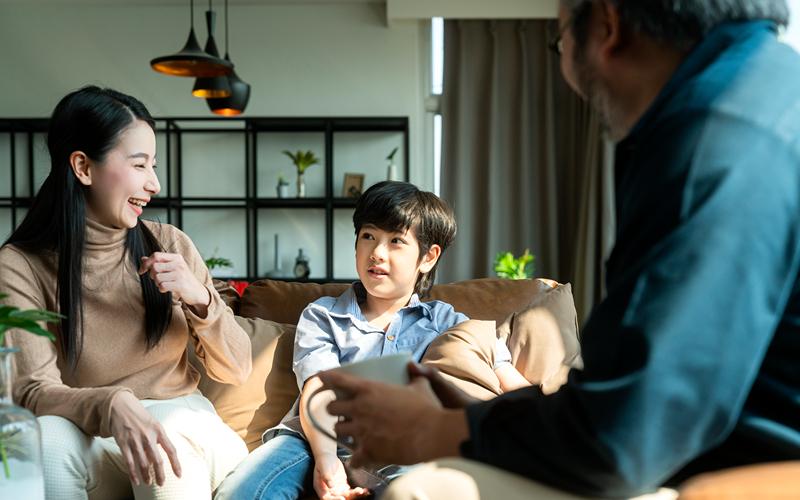Parent’s Guide to Enrolling in a Chinese Preschool

Enrolling your child in a Chinese preschool can be one of the most significant educational decisions parents make during early childhood. Due to the city-state’s emphasis on bilingualism, preschools that integrate Mandarin as a core part of their curriculum have gained popularity among parents who want their children to develop both linguistic and cultural fluency.
Explore a practical overview of what parents should know before enrolling their child in a kindergarten in Singapore that focuses on Chinese-language learning.
Understanding the Purpose of Chinese Preschools
A Chinese preschool goes beyond teaching Mandarin as a subject. These schools aim to immerse children in the language environment through daily interactions, storytelling, songs, and play-based learning. The goal is to help children internalise the language naturally rather than memorise vocabulary. This approach aligns with the region’s bilingual policy, where both English and Mother Tongue proficiency are essential for future academic success. Parents who want their children to build confidence in speaking, reading, and understanding Mandarin often choose Chinese preschools for their strong foundation in both linguistic and cultural development.
Many Chinese preschools also incorporate cultural elements such as calligraphy, Chinese festivals, and traditional values into the curriculum. This exposure helps children appreciate their heritage from a young age while building respect for cultural diversity.
Evaluating Curriculum and Teaching Methods
Parents, when choosing a kindergarten, should examine how the school integrates Mandarin into its curriculum. Some Chinese preschools conduct lessons entirely in Mandarin, while others use a bilingual model where both English and Mandarin are taught equally. The right balance depends on your child’s comfort level and the linguistic environment at home.
It is also worth asking about the school’s teaching approach. Many reputable preschools adopt inquiry-based learning or play-based learning models, which encourage children to explore topics in both languages through interactive activities. Teachers often use music, storytelling, and dramatisation to make language learning engaging and memorable. The most effective programmes strike a balance between structured language instruction and creative learning experiences that keep young learners motivated.
Assessing the Quality of Teachers and Facilities
Qualified teachers are essential to a child’s learning experience. Parents should look for a Chinese preschool where educators are fluent in Mandarin and trained in early childhood pedagogy. Teachers should have formal certification recognised by the Early Childhood Development Agency (ECDA) and demonstrate a nurturing, child-centred approach.
Beyond staff qualifications, facilities also play a major role in a child’s comfort and development. Safe, well-maintained classrooms, dedicated language corners, and creative learning zones can significantly enhance the preschool experience. It is advisable for parents to visit the preschool in person to observe classroom interactions and assess whether the environment feels welcoming and stimulating for their child.
Understanding Fees, Schedules, and Enrolment Procedures
The enrolment process for a kindergarten in Singapore can vary depending on the school. Most Chinese preschools require parents to register early, as popular centres often have long waiting lists. The standard age for preschool enrolment ranges from 18 months for playgroup programmes to six years old for kindergarten levels.
Parents should review the school’s fee structure, which may differ based on programme duration, location, and curriculum type. Full-day programmes typically include meals and enrichment activities, while half-day sessions focus primarily on academic and language development. Some preschools also offer optional enrichment classes in speech, drama, or music conducted in Mandarin.
It is advisable to attend the school’s open house sessions to understand class schedules, teacher-to-child ratios, and the range of co-curricular activities available. These visits also give parents a chance to meet teachers and assess the preschool’s overall atmosphere.
Preparing Your Child for Transition
Once a preschool has been selected, parents can support the transition by introducing Mandarin in daily routines at home. Reading picture books in Chinese, singing nursery rhymes, or having short conversations in Mandarin can help children feel more confident when classes begin. The adjustment period is usually smoother when the child is already familiar with the language and routines similar to those practised in the Chinese preschool setting.
Conclusion
Choosing a suitable kindergarten that focuses on Chinese-language learning requires careful consideration of curriculum, teachers, environment, and practical arrangements. A well-structured Chinese preschool not only nurtures linguistic ability but also instils discipline, curiosity, and cultural understanding. Early preparation and active involvement in the selection process for parents ensure that their child starts their educational journey with a strong bilingual foundation and a positive attitude toward lifelong learning.
Visit Orange Tree Preschool to find the right bilingual learning environment for your child’s future success.







Leave a Reply